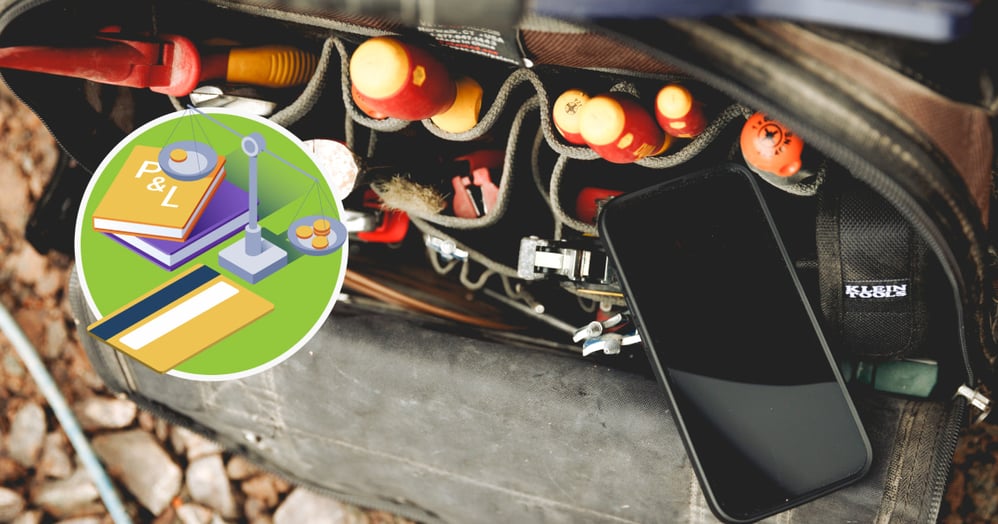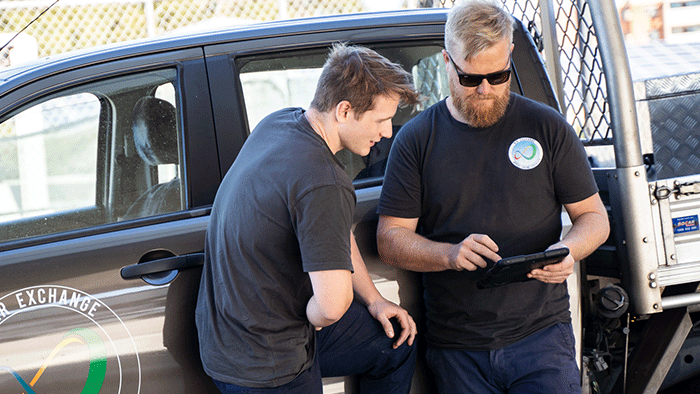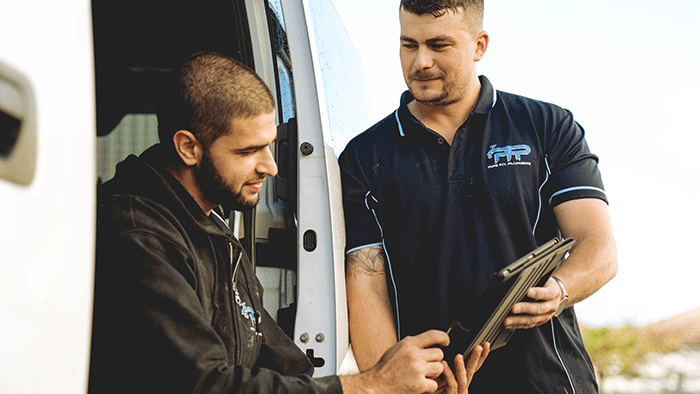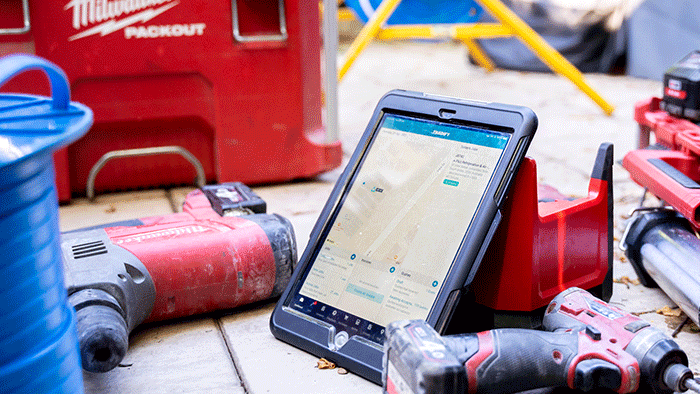What Is Making Tax Digital? A Guide for VAT-Registered Tradespeople
by Team Tradify, February 20, 2024

Table of Contents
Staying organised and keeping track of your finances is crucial to running a successful trade business. That's why HM Revenue and Customs (HMRC) has introduced the Making Tax Digital (MTD) scheme. The scheme is the latest policy geared toward a paperless tax system — aimed at ensuring that filing tax returns and other legal documents, will be simple, easy, and stress-free.
If you've been operating a paper system until now, a move to digital might just seem like added stress during tax time. But, a few extra steps now will mean many fewer steps in years to come — going paperless is always worth it in the long run.
In short, here's what you need to know:
- All VAT-registered businesses should now be signed up for MTD. If you haven't already signed up for MTD yourself, don't stress — the HMRC will have already done this for you. All you need to do now is keep VAT records and submit returns using MTD-compatible software.
- If you're not VAT-registered, then you're not required to do anything right now, but you may want to get out in front of MTD before push comes to shove.
- From 6 April 2026, it will become mandatory for those who are self-employed (or landlords) and earning over £50,000/yr (from business or property) to sign up to MTD and file income tax digitally.
- From April 2027, any self-employed person (or landlord) making over £30,000/yr (from business or property) will have to sign up to MTD and file income tax digitally.
For trade business owners still operating a paper system, MTD will require a few changes to get set up. To help, we’ve put together some simple guidelines, so you can get back to doing what you do best, quickly.
Tackle the end of tax year with our free end of tax year checklist:
Short on time? Skip ahead:
- Making Tax Digital for VAT explained
- The benefits of going digital
- Get prepared: how to sign up for Making Tax Digital
- How can we help?
- Extra help for Making Tax Digital
1. Making Tax Digital for VAT explained
Making Tax Digital for Value Added Tax (VAT) is part of the overall digitalisation of UK Tax. It’s designed to help businesses eliminate common errors and save time managing their tax.
For VAT-registered tradespeople, it means two things:
Quick summary of the Making Tax Digital timeline 🗓
- April 2019 - Making Tax Digital was first launched for people with taxable turnover above the VAT threshold (£85,000 per annum).
- July 2020 - It was announced that all VAT-registered businesses must file digitally through Making Tax Digital from April 2022, regardless of turnover.
- April 2026 - Making Tax Digital for Income Tax Self-Assessment will now into effect for self-employed individuals or landlords making an annual income of £50,000 from business or property in the tax year beginning in April 2026.
- April 2027 - Making Tax Digital for Income Tax Self-Assessment will now into effect for self-employed individuals or landlords making an annual income of £30,000 from business or property in the tax year beginning in April 2027.

2. The benefits of going digital
In a recent independent study of over 2,000 businesses, 69% reported experiencing at least one benefit from Making Tax Digital. These included:
- Preparing and submitting returns faster.
- Increased confidence that they were getting tax right.
“Making Tax Digital is fundamental to the delivery of a trusted and modern tax system, making it easier for businesses to get their tax right and supporting the UK to go digital,” says Joanna Rowland, HMRC’s Director General for Transformation. “By signing up for Making Tax Digital, we expect most businesses to experience long-term benefits, including reduced errors and time saved in managing their tax affairs.”
For UK tradespeople, it’s an opportunity to spend less time on admin, something we know is still a big problem for UK tradespeople. That’s time you could be using to grow your trade business, win more work, and hire more staff.

3. Get prepared: sign up for Making Tax Digital
Making Tax Digital for VAT has been mandatory for all VAT-registered businesses since 1 April 2022.
When do you need to sign up?
If you're a VAT-registered business earning over £10,000/yr and haven’t signed up for Making Tax Digital yet, don't worry. The HMRC will now have automatically signed you up to the scheme.
What's left to do?
Now that you're signed up, all that's left to do is pick a compatible software to record and file VAT documents and returns. Paper records and returns are no longer allowed.

4. Making Tax Digital made easy with Tradify
Under Making Tax Digital, trade businesses are required to keep digital records. Tradify offers a simple way for trade business owners to digitise tax by automatically applying VAT rates to your quotes, invoices, purchase orders or bills.
Here’s how it works:
- In the Tradify app, VAT will automatically be calculated for UK users.
- Tax rates can be edited, and users can add, edit or remove their tax rates as necessary.
- Tax rates are applied to quotes, invoices, purchase orders and bills. You can include or exclude tax as legally required.
Once your VAT is digitally recorded, you need to submit your VAT returns directly to HMRC using compatible software. We’ve got more good news – Tradify seamlessly integrates with several compatible accounting software options including:
5. Finding more help for Making Tax Digital
Need more info on how to sign up for Making Tax Digital? HMRC is running a series of webinars – more information can be found on HMRC’s Making Tax Digital help page.
Ready to go digital with Tradify?
Sign up for a 14-day free trial or pop over to one of our live demo webinars to see the trade business management app in action.
Related articles

Quoting on the Go a Game-Changer for ADF Roofing

The Best Gloves for Carpenters

How To Keep Your Trade Business Running When You’re on Holiday
Give Tradify a go for free!
Save 10+ hours/week on business admin with the highest-rated job management software for tradespeople.
With free one-on-one training and phone support, it's never been easier to get started.



